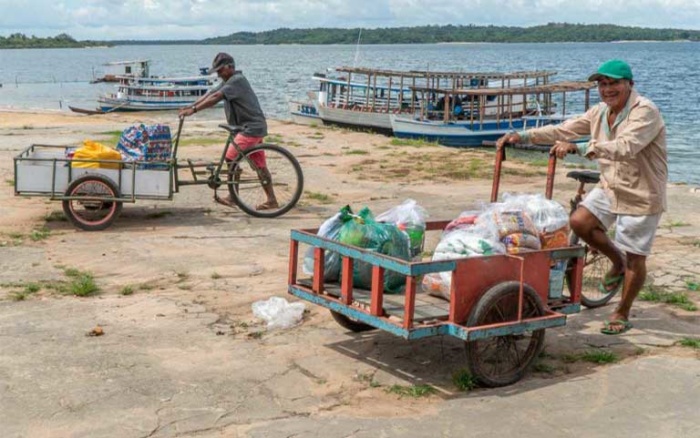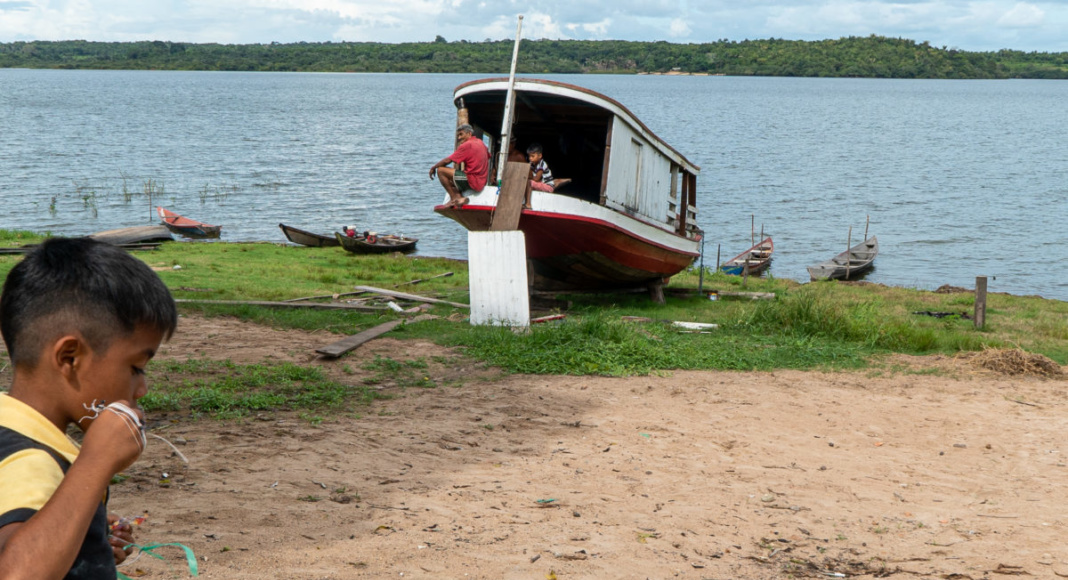- Mining of gold and other precious metals in the Amazon fueled the Spanish and Portuguese colonial empires, while bringing misery and death to unknown hundreds of thousands of Indigenous people and African slaves, forced to work the mines.
- Modern industrial mining came to the Brazilian Amazon in the late 1940s as transnational firms began digging up and processing manganese, iron, bauxite, zinc, and other ores. Like the earlier iterations of mining, transnational firms, investors, and nations profited hugely, while local people saw little benefit.
- Brazil offered massive subsidies and tax incentives to attract transnational mining companies, and built giant public works projects, including mega-dams, transmission lines, and roads to provide energy and other services to the mines. Though the government offered little to disrupted traditional communities.
- All this came with extraordinary socio-environmental costs, as Brazilian Amazon deforestation soared, land and waterways were polluted, and Indigenous and riverine peoples were deprived of their traditional ways of life and lands, and suffered major public health repercussions. This mining trend continues today.
- This article was first published by Mongabay on 21 December 2020. You can read the original here.
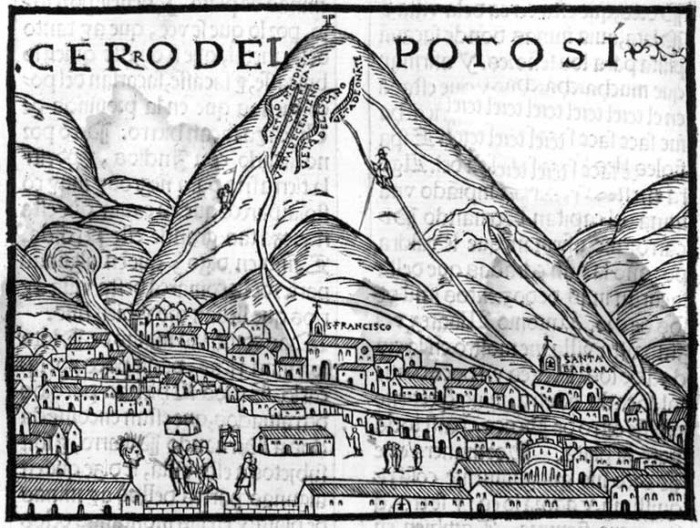
Ever since the arrival of Spanish Conquistadors in the 16th century, many outsiders have followed the example of these bold European adventurers along with the crown heads of Europe in seeing South America as a treasure house of mineral wealth.
An emblematic example: the discovery by colonizers of a huge silver mountain in Potosi, Bolivia in 1545. Ultimately, that mother lode and other Amazonian ores, first exploited by the Spanish and Portuguese, changed the world forever, as they triggered the first great wave of globalization — a tsunami of trade not only in precious metals, but in slaves, spices, fabrics and other goods.
“For the powerful emperor, for the wise king, this lofty mountain of silver could conquer the world!” read an engraving on an ornate shield sent by Spain’s King Felipe to Potosi in 1561.
But for others, colonial mining was a catastrophe. Uncounted thousands of Indigenous people suffered forcible recruitment, with most dying in Latin American mines, leading to a demographic collapse. Then many hundreds of thousands of African slaves, brought in to take their place, succumbed to hunger, brutality and social isolation in the mines.
Even today, Potosi residents say, with a considerable dose of exaggeration: “You could build a silver bridge from Potosí to Madrid from what was mined here — and one back again, with the bones of those that died taking it out.”
Four centuries later, controversy still rages over Amazonia’s extractive industries. Current Brazilian President Jair Bolsonaro, and the military officers in his government, just like King Felipe, still claim Brazil’s mineral wealth as an unmitigated blessing.
Speaking in April 2019, in Amapá — Brazil’s most northerly state, with vast largely untapped mineral riches — Bolsonaro proclaimed: “We are going to use the wealth God gave us to promote the wellbeing of our population!”
But many in rural Amazonian communities, their lives and livelihoods shattered by mining — along with some researchers and many environmentalists — view things in the opposite: They see the Amazon’s great wealth in ores as a curse.
In this, the concluding article of a six-part Amazon Mining series, Mongabay charts these conflicting viewpoints, in particular referencing the modern history of bauxite mining and aluminium processing in Pará state, Brazil.
Brazil invites the world to its treasure house
Industrial mining arrived in the Amazon in the late 1940s when ICOMI, a Brazilian company associated with U.S. transnational Bethlehem Steel, opened a huge manganese mine in Amapá.
Brazilian policymakers immediately latched onto Amazon industrial mining as a heretofore undreamed of economic boon, and a national cash cow that could fund their future plans. “From the 1950s, Amazonia became a definitive part of the country’s development strategies,” according to sociologist Lindomar de Souza, who has studied Amazon bauxite mining.
The Brazilian government’s goal was to follow a path set by industrialized nations, said Souza: “The concept of development held by the Brazilian state is profoundly embedded in the models adopted by the Western capitalist industrialized countries. According to this logic, progress is understood as a growing and uninterrupted improvement in material wellbeing.”
Brazil decided that, if the nation’s economy was to expand rapidly, it would need both national and largescale foreign investment. To achieve this goal, the government fashioned astounding economic enticements to attract unending waves of international investors and transnational mining companies. These included generous tax incentives for firms investing in the Amazon, introduced in 1966 and still in force today.
According to Alessandra Cardoso, from INESC (the Institute for Socioeconomic Studies), a non-profit organization, these incentives exempt mining companies from “at least 82.5% of corporation tax.” Such generosity did much to attract industrial mining firms, but added little to government coffers. And no system was established in which the companies were made to pay for needed infrastructure to support and modernize mining-impacted Amazon communities, including much needed pollution controls, safeguards to water supplies, rural electrification and public health facilities.
Another key corporate inducement was the Kandir Law, promoted with the slogan “what matters is to export.” This 1996 law exempts all exports of primary products and of semi-manufactured products — think “mining ores” — from ICMS, a tax on the circulation of goods, charged by state governments. This law, like the tax incentives, feeds the mining industry while starving rural communities: A Pará state deputy calculates that the state government lost an income totalling R$548 billion (US$188 billion) to Kandir Law exemptions between 1996 and 2016.
The main mining tax that benefits the government comes from the Financial Compensation for Mineral Resource Exploitation (CFEM), a tax paid by mining companies, charged on net income at 3% for aluminium ore and 2% for iron ore. Sixty percent of this tax revenue goes to the municipalities where the ore is processed, 15% to municipalities affected by the mining, and 15% to the state and 10% to the national governments.
But Cardoso doubts whether much of this ever trickles down to local populations. She thinks that CFEM tax income merely consolidates the presence of mining companies, because it mostly acts as a lure that “generates a powerful reason for local politicians to attract projects.” Very little of this money benefits communities, she says: “CFEM resources in the municipalities have historically been managed without transparency, with many cases of corruption and with the absence of any kind of social control.”
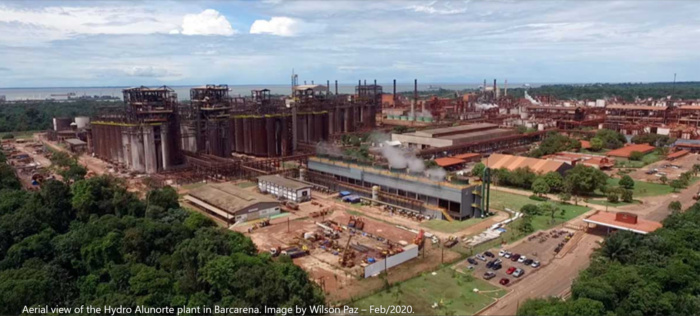
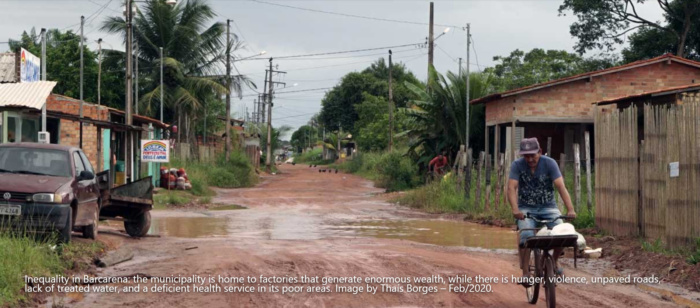
In Pará communities visited by Mongabay, almost everyone we spoke to agreed with Cardoso. “We have been suffering the impact of mining for 40 years and we still haven’t got basic sanitation or been linked into the national energy grid,” said Amarildo de Jesus, a leader of the quilombola community in Oriximiná, situated just 500 yards from the giant bauxite mine run by Mineração Rio do Norte (MRN). Quilombolas are descendants of runaway slaves, many of them living in traditional rural communities.
Similar criticisms were leveled by people living in Barcarena, 30 miles from Belém and home to giant mining companies, including Hydro Alunorte, the world’s largest alumina smelter, and Imerys Rio Capim Caulim, the world’s biggest kaolin processing plant. Despite the wealth generated by these factories, signs of extreme deprivation are clearly visible, though mining companies across Amazonia and government assert they’ve cleaned up pollution and provided various community amenities.
Another government inducement offered to transnational firms is low-cost electricity. Amazônia possesses numerous huge rivers, all Amazon River tributaries, where energy can be generated cheaply via hydroelectric dams, particularly if little heed is paid to socio-environmental impacts.
Over recent decades an aggressive dam building program that supports mining energy needs has been pursued consistently under presidencies from Brazilian left and right political parties, while plans for many new dams are still in the works. As the mining and dam building booms proceeded, the government did little to examine the destructive socio-environmental synergies that came with Amazon industrialization.
The electricity subsidies provided by the Brazilian authorities have been key for mining firms turning alumina into aluminum, a process demanding massive amounts of electricity. According to one academic study, the state electricity company, Eletronorte, subsidized the electricity costs of Albrás, a major aluminum manufacturer in Barcarena, providing US$1 billion from 1985 to June 2004.
Pará is the Amazon state that most warmly welcomed transnationals to mine reserves of iron, bauxite, tin, copper, manganese and other metals. According to Souza, Pará’s bauxite reserves are the third largest in the world, exceeded only by those in Australia and Guinea. Mining has been expanding at a very rapid rate in the state. In 2019, its income from the CFEM tax surpassed for the first time that of Minas Gerais, which has been at the heart of Brazilian mining since the discovery of gold there in the 1690s.
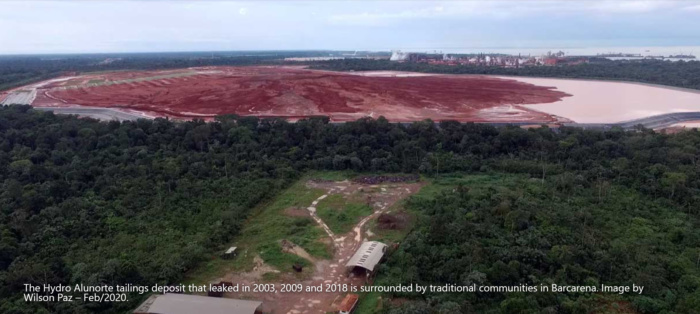
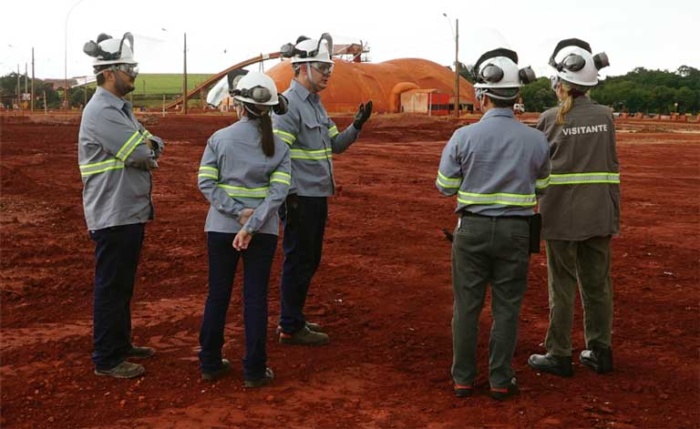
Environmental devastation
In the 1980s, local authorities and transnationals were forced to adapt to the growing environmental awareness in Brazil and abroad, with mining companies required to carry out an Environmental Impact Assessment (EIA) as part of each project’s licensing.
Even so, economic concerns remained paramount, says Andréa Zhouri, lecturer in anthropology at the Federal University of Minas Gerais: “The licensing procedure was not designed to evaluate the feasibility of projects from the point of view of the plans of the local communities and of the ecological conditions in the locations. The economic project is always imposed in an inexorable way… on the basis of a logic centered around the profitability of the business in which reducing costs has become a mantra.”
As a result, Zhouri says, licensing was never allowed to establish no-go zones for mining projects. In fact, Brazilian EIAs only look at nearby mining impacts, while not deeply considering affected communities. This, says Zhouri, greatly underestimates harm done.
A case in point: Oriximiná municipality where MRN is opening a new mine in a forested area routinely used for generations by four ribeirinho (traditional riverine) communities to hunt, gather forest products, and for the planting of small subsistence crops. The mine will potentially pollute local rivers and scare off animals the ribeirnhos hunt. But, probably because the operation won’t be superimposed on the four villages where the people live, but on the forest upon which their livelihoods depend, no ribeirinho community was consulted or even mentioned in the new mine’s EIA .
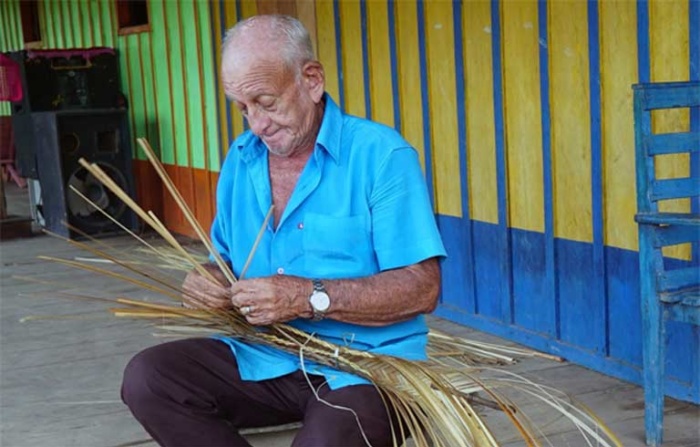
Valdimir Moreira, the MRN mining company’s director of sustainability, told Mongabay that he did not consider the ribeirinhos interests to be protected under the International Labour Organization’s Convention 169, which guarantees all Indigenous and tribal people the right to “prior, free and informed consultation” before a project goes ahead. Brazil is a signatory of Convention 169.
This exclusion from the formal consultation process gives the company control, allowing it to avoid required consultations with communities in advance of a project, while offering voluntary mitigation as a project is carried out, as a gesture of goodwill. “The company wants to give us the medication without knowing what the illness is,” Evanilson Figueiredo, an Oriximina ribeirinho leader said.
This approach is enthusiastically endorsed by Brazil’s most influential mining industry association, IBRAM (The Brazilian Institute of Mining). In a Mongabay interview, Flávio Ottoni Penido, its director-president, pointed to a September 2019 statement by the Institute. It reads in part: “We are committed to a profound transformation of the mining industry, in our processes and techniques, in our relations with people and nature… We know that we must intensify the practice of listening and dialoguing. We are available, open, and genuinely wishing to evolve.”
Crucially, this industry vision for sustainable development is completely voluntary, and not required of mining companies — it also fails to recognize the right on the part of traditional communities to play a lawful role in deciding their futures for themselves.
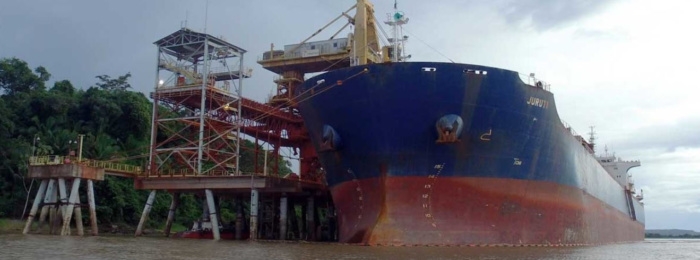
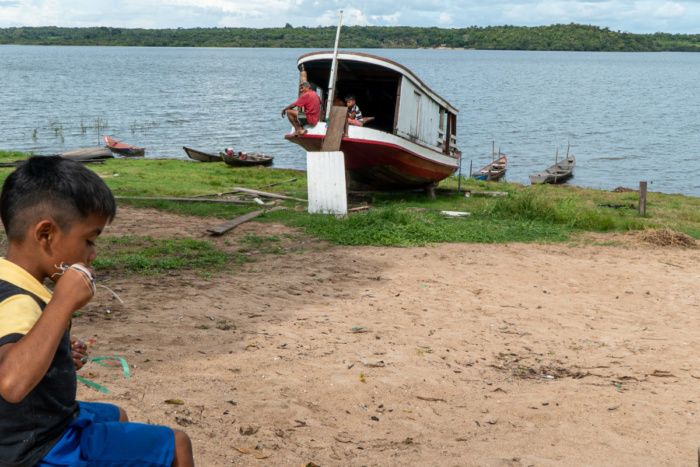
An unstated industry and government assumption is that traditional Amazonian communities want to follow the same developmental path as the rest of Brazil, and much of the modern world. “The inhabitants of Amazonia need to have their rights respected and to be able to generate the income and the prosperity that other Brazilians have conquered through the implementation of sustainable mining projects,” Penido said. He pointed out that “municipalities with mining activities generally have a higher Human Development Index (HDI) than other municipalities.”
While this is often true, it ignores the glaring social inequality and severe environmental harm of large mining projects. Barcarena in Pará state, which the Mongabay team visited, has at its center a tightly packed cluster of gigantic alumina, aluminum and kaolin plants. While these have greatly boosted the municipality’s economic output, the facilities have also contaminated waterways and destroyed subsistence livelihoods. The processing plants have also been the scene of serious accidents — more than 20 in total from 2002 to 2018, most due to toxic tailings basin spills. Today, the bodies of most local inhabitants are contaminated with heavy metals, many of them carcinogenic.
Analysts are almost certain many more Amazon mines will open in coming decades. According to Alessandra Cardoso, “Amazonia is considered by the mining sector as the country’s mineral frontier. There are hundreds of prospection and mining requests scattered across Amazonia, many of them in very sensitive areas from an environmental point of view. This is very dangerous for the environmental integrity of the biome and the severity of the global environmental crisis.”
Mining is part of a broader Amazon onslaught in which public lands are rapidly being converted to private lands, as Indigenous reserves and protected areas are invaded, and forests are cut illegally by land grabbers, land speculators, cattle ranchers, and large scale soy plantation farmers. According to Andrea Zhouri, this wholesale rainforest conversion is carried out via a cruel often illegal expropriation process: “What attracts attention in the Amazon context is the violence of the advance of the Amazon frontier into the forest and the territories traditionally occupied by Indigenous peoples and communities. These areas of common use, rich in biodiversity, are transformed into veritable ‘zones of sacrifice’ characterized by brutal processes which can be identified as ecocide and ethnocide.”
The Dutch-American sociologist Saskia Sassen, a U.S. Columbia University professor, told Mongabay that these brutal processes form part of a new systemic logic, in which — no matter what the geographic frontier — institutions are increasingly being used to promote the growth of corporations, with the maximum of freedom for the corporations and the minimum of monitoring by the authorities. In her book, Expulsions, she describes a series of “microspaces,” in which destruction on an unprecedented scale, even of the very biosphere that makes life possible, is now occurring. Some of the communities impacted by Amazon mining would recognize the industrial apocalypse she describes.
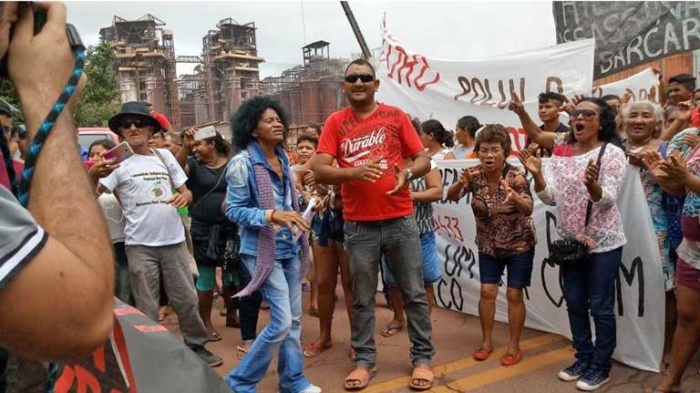

Resistance growing
There are many examples of resistance among Amazon communities impacted by mining — though the struggle is completely unequal in terms of political and economic power. The most inspiring story encountered by the Mongabay team took place in Juriti Velho, made up of several ribeirinho communities on the Amazon River. After a long struggle, these traditional communities succeeded in getting their long-time occupation of their ancestral homeland officially recognized by the Brazilian state, preventing eviction from their lands, despite efforts to do so to make way for a bauxite mine. The ribeirinhos also gained major damage compensation settlements from ALCOA.
What happened at Juruti Velho has undoubtedly been a source of inspiration for other traditional peoples and communities. However, even in this case, there is no doubt of whom benefited (the ALCOA mine went forward; something the communities initially wanted to prevent), and for whom industrial mining has been a curse.
Gleice Coelho, one of the leaders of the Juruti Velho resistance, summed things up, describing a poignant shift in community livelihoods: “One of the saddest and most ironic experiences in my life was to see from my window an old man, who once made his living by collecting Brazil nuts in… the forest, now felled to make way for the mine; [he] is now collecting aluminum cans discarded as rubbish on the streets.”
